Rhinoplasty is the official name of the operation that improves the appearance and/or function of the nose. It involves removing any “excess” bone or cartilage while refining the appearance of the rest of the nose to bring it in harmony with the other features of the face. Like faces, every nose is different; some noses are too long, some too wide, some have large humps, some project away from the face, and some are too small.
As a specialist in Facial Plastic Surgery, Dr. Waldman is uniquely qualified to perform rhinoplasty, having initially trained with Dr. Jack Anderson in New Orleans (who many consider the father of modern day rhinoplasty). Dr. Waldman has now operated on over 2,000 rhinoplasty patients since the opening of his practice in Lexington, Kentucky in 1983. Many patients travel hundreds of miles to see Dr. Waldman, and his expertise with rhinoplasties and revisions is well recognized by his facial plastic surgery peers.
Good candidates are usually healthy patients who have realistic expectations regarding the procedure. Rhinoplasty can be an ideal treatment for people who want to address the following nasal concerns:

Generally, girls are mature enough by the age of thirteen or fourteen (boys at the age of fifteen) to undergo this procedure. Because each person matures at a different rate, Dr. Waldman can perform an accurate evaluation of a prospective patient’s situation.
A rhinoplasty procedure can help improve a variety of aesthetic and functional concerns by refining the nasal cartilage, soft tissue, and bones based on each patient’s particular needs and goals. Dr. Waldman can create a personalized surgical plan to alter the framework of the nose, allowing him to:
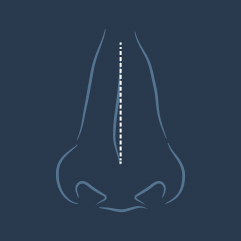
A misaligned or crooked nose
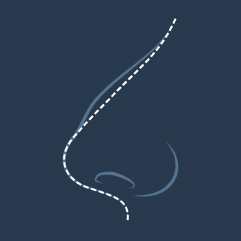
A hump in the nasal bridge
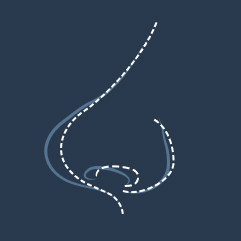
A bulbous tip
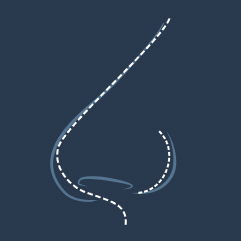
A drooping nasal tip
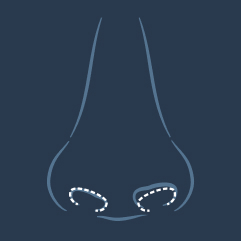
Disproportionately sized nostrils
You can expect a thorough explanation of Dr. Waldman’s recommendations and expectations as well as the potential risks involved with surgery. Following a joint decision by you and Dr. Waldman to proceed with rhinoplasty, his assistant will take photographs of you and you will discuss the options available. He will explain how the nasal structures, including the bone and cartilage, can be sculpted to reshape the nose and indicate how reshaping the chin, for example, could also enhance the desired results.
Dr. Waldman will explain the procedure as well as the potential risks involved with the surgery.
Rhinoplasty is done as an outpatient procedure under either general or “twilight” anesthesia. Dr. Waldman prefers to use the twilight IV sedation method whenever possible. Generally, there are two main surgical techniques used to perform rhinoplasty procedures based on the unique goals and needs of the patient to achieve their desired appearance or functionality:
Dr. Waldman most commonly uses the open rhinoplasty approach, also referred to as external rhinoplasty. This technique requires a very small incision to be made at the base of the nose, between the nostrils. Underlying bone and cartilage can be easily accessible through this small incision to make the desired changes. This method is designed to allow more precise visibility and control of the procedure and is often the chosen technique for more complex or revisional rhinoplasty procedures.
Each patient’s recovery period is different depending on the individual’s unique circumstances. Here is a general timeline of what you can expect during the healing process:
7-8 days after surgery: Any external sutures are removed and any internal sutures continue to dissolve on their own. The external cast or splint that the patient received after surgery is removed as well.
1 week after surgery: Most patients can return to work or school.
2-4 weeks after surgery: At this stage, patients are usually able to return to more strenuous activities. Swelling and bruising progressively subside, but a final result may not be evident for 12-14 months. With that in mind, the most noticeable level of swelling should dissipate long before then.
It is important to know that Dr. Waldman does not do post-surgical nasal packing, which reduces the chances of severe nasal pain and headaches after rhinoplasty. In general, any initial discomfort can be managed by taking oral medication. If pain persists or gets worse for more than one week, contact our office for assistance.
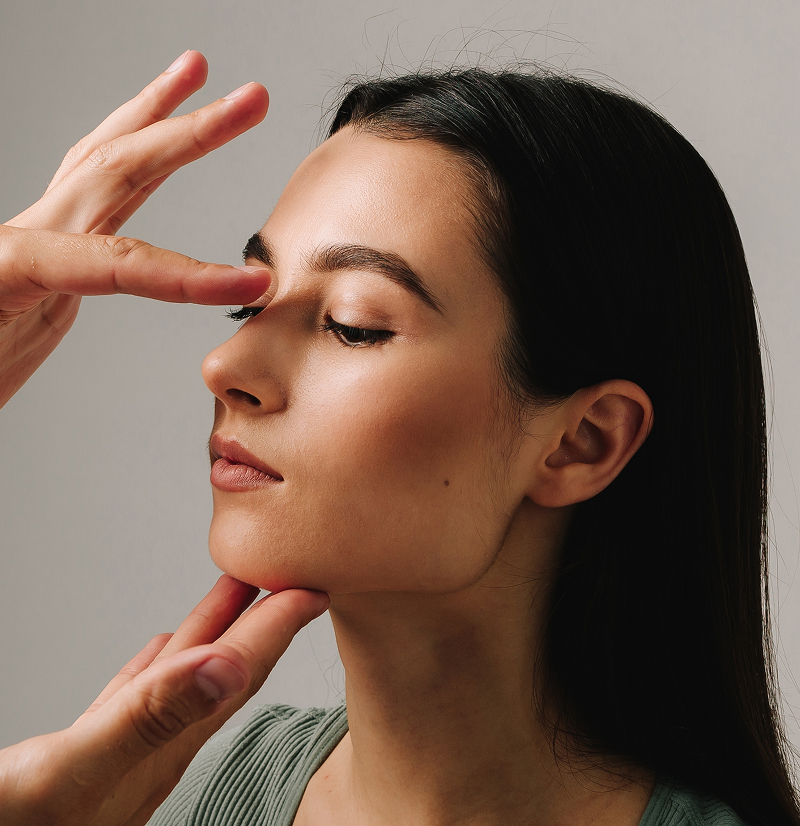
“I am very satisfied with my experience with Waldman Schantz Plastic Surgery Center. I had skin cancer surgery and required surgery to repair my nose. I was referred to a different surgeon with UK and after he "jerked me around" for 3 weeks I was referred to Dr. Brad Turner. He saw me on Tues and did my surgery on Wed. I am very pleased with the results and would definitely refer friends and family to Waldman Schantz. The office staff are very friendly and helpful and the experience is NOT like being in a Doctors office.”
Depending on the surgical technique utilized, rhinoplasty procedures typically can result in little or no visible scarring. When a closed rhinoplasty approach is performed, the incisions are created inside the nostrils and therefore any scarring is unnoticeable from outside of the nose. During an open rhinoplasty, a small external incision is made on the underside of the nose in the area between the nostrils. This discreet location allows for rather inconspicuous scarring in the natural nose crease upon healing. After Dr. Waldman has had a chance to evaluate your unique case, he can go over the details of your custom treatment plan with you and outline what can be expected as far as residual scarring is concerned.
Dr. Waldman often looks at facial structure and whether a chin augmentation may enhance the rhinoplasty procedure. At times, neck liposuction may be recommended to improve the facial profile.
A rhinoplasty can result in a more attractive nasal shape and a more proportional nose in relation to other facial features. If the nasal airway obstruction is a reason for the surgery then you should expect an improvement of nasal function after the swelling has subsided.

Yes, for minor changes, some people opt for non-surgical rhinoplasty, or “liquid rhinoplasty,” where dermal fillers are used to reshape the nose. This can improve certain cosmetic aspects but doesn’t provide permanent results or correct structural issues affecting breathing.
Most patients can return to work or school after 1–2 weeks, but full recovery can take several months as swelling subsides gradually. Physical activities and strenuous exercise should be avoided for at least a few weeks to support optimal healing.
Yes, after surgery, a splint is typically worn on the nose for about one week to protect it and maintain its new shape during initial healing. This is a standard part of post-operative care for most rhinoplasty procedures.
While initial changes will be noticeable within a few weeks, it can take up to a year for the final shape to emerge as the nose settles and all swelling fully subsides. Patience is key to seeing the ultimate results.
Yes, rhinoplasty is often combined with other procedures like chin augmentation, eyelid surgery, or a facelift to enhance facial balance. Combining surgeries can reduce overall recovery time and achieve a more harmonious look.
It’s rare, but some temporary alterations in the sense of smell may occur immediately after surgery due to swelling. In most cases, patients’ senses return to normal as healing progresses.
Not only can rhinoplasty improve the size, shape, and symmetry of the nose, but also correct certain types of functional breathing issues. If you are interested in scheduling a consultation, or if you would like to learn more about rhinoplasty, we invite you to contact our practice today!